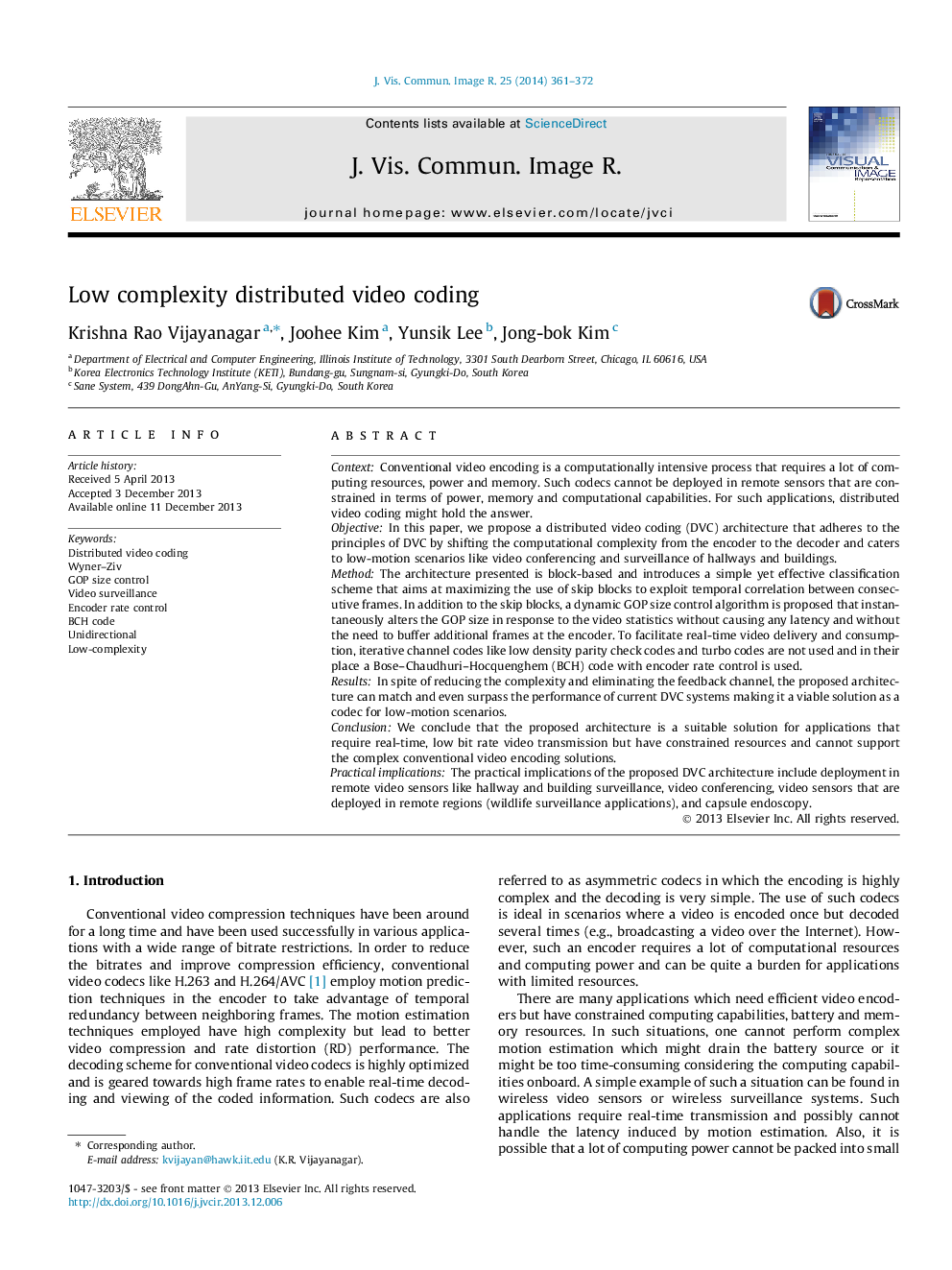| کد مقاله | کد نشریه | سال انتشار | مقاله انگلیسی | نسخه تمام متن |
|---|---|---|---|---|
| 532466 | 869962 | 2014 | 12 صفحه PDF | دانلود رایگان |
• A low-complexity, block-based, unidirectional, low-latency distributed video codec is proposed.
• The goal is to enable real-time video encoding on low-complexity video sensors.
• A simple, efficient block classification scheme is proposed to reduce the bitrate.
• A dynamic GOP size control algorithm is also proposed based on the video statistics.
• A BCH code is used to reduce decoding latency and speed up the overall codec.
ContextConventional video encoding is a computationally intensive process that requires a lot of computing resources, power and memory. Such codecs cannot be deployed in remote sensors that are constrained in terms of power, memory and computational capabilities. For such applications, distributed video coding might hold the answer.ObjectiveIn this paper, we propose a distributed video coding (DVC) architecture that adheres to the principles of DVC by shifting the computational complexity from the encoder to the decoder and caters to low-motion scenarios like video conferencing and surveillance of hallways and buildings.MethodThe architecture presented is block-based and introduces a simple yet effective classification scheme that aims at maximizing the use of skip blocks to exploit temporal correlation between consecutive frames. In addition to the skip blocks, a dynamic GOP size control algorithm is proposed that instantaneously alters the GOP size in response to the video statistics without causing any latency and without the need to buffer additional frames at the encoder. To facilitate real-time video delivery and consumption, iterative channel codes like low density parity check codes and turbo codes are not used and in their place a Bose–Chaudhuri–Hocquenghem (BCH) code with encoder rate control is used.ResultsIn spite of reducing the complexity and eliminating the feedback channel, the proposed architecture can match and even surpass the performance of current DVC systems making it a viable solution as a codec for low-motion scenarios.ConclusionWe conclude that the proposed architecture is a suitable solution for applications that require real-time, low bit rate video transmission but have constrained resources and cannot support the complex conventional video encoding solutions.Practical implicationsThe practical implications of the proposed DVC architecture include deployment in remote video sensors like hallway and building surveillance, video conferencing, video sensors that are deployed in remote regions (wildlife surveillance applications), and capsule endoscopy.
Journal: Journal of Visual Communication and Image Representation - Volume 25, Issue 2, February 2014, Pages 361–372
